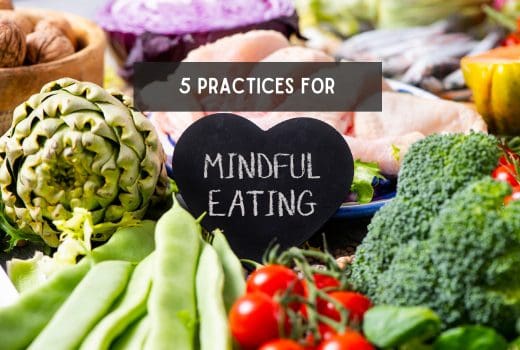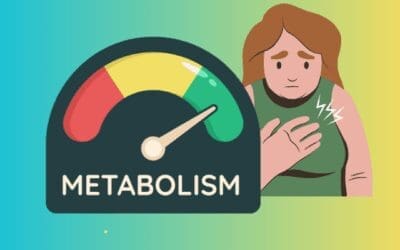Let’s face it, between work deadlines, family commitments, and that ever-growing social calendar, who has time for sit-down meals with perfectly portioned plates?
I get it.
Often, healthy eating habits fall by the wayside. We grab whatever’s convenient, scarf it down on the go, and then wonder why our clothes feel a bit tighter.
Sound familiar?
If you’re a busy professional like most of us, you’ve probably experienced the frustration of yo-yo dieting and the constant battle against mindless munching. You might even feel like healthy eating requires superhuman willpower and hours of meal prep – simply not realistic in our jam-packed lives.
Mindful Eating: A Smarter Way to Manage Weight
Traditional diets often leave us feeling restricted and deprived, leading to yo-yo dieting and frustration. Mindful eating offers a welcome change. It’s not a fad diet or a quick fix – it’s a sustainable approach to food that helps you develop a healthy relationship with what you eat.
Here’s the beauty of mindful eating: it works for busy schedules!
Forget spending hours prepping fancy meals or meticulously tracking calories. Mindful eating is all about simple practices you can incorporate into your daily routine. By paying closer attention to your food choices and how you eat, you can not only manage your weight but also experience a range of other benefits, like improved digestion and reduced stress.
5 Simple Practices for Mindful Munching

1. Pause Before You Play: Identifying True Hunger
Ever race home after a long day, ravenous and ready to raid the fridge? Before you dive in headfirst, take a moment to check in with yourself. Are you truly hungry, or is there something else going on?
Sometimes, stress, thirst, or even boredom can disguise themselves as hunger pangs. Taking a quick pause to listen to your body’s signals can make a big difference. Ask yourself:
- “Is my stomach growling, or am I just feeling a bit jittery?” (Stress)
- “Would a glass of water quench this craving?” (Thirst)
- “Am I reaching for food because I’m bored and need a distraction?” (Boredom)
A few deep breaths or a glass of water might be all you need to satisfy that non-hunger urge.
2. Become a Food Detective: Engaging Your Senses
Mindful eating isn’t just about what you eat – it’s about how you experience it!
Think of yourself as a food detective, on a mission to uncover the hidden secrets of your meal. Instead of mindless munching while scrolling through your phone, engage all your senses.
Start by taking a moment to appreciate the visual delights on your plate. Notice the vibrant colours, the interesting textures, and the way the light plays off your food. Then, take a deep breath and savor the aroma.
What scents tantalize your nose? Is it the fresh herbs, the zesty citrus, or the warm spices?
Finally, take a bite and become a connoisseur of flavour. Chew slowly, noticing the different taste sensations as the food interacts with your tongue.
Is it sweet, salty, sour, or bitter? Do the flavours change as you chew?
By engaging your senses in this way, you become more present in the moment of eating, allowing you to appreciate your food on a deeper level. This can help you feel satisfied with smaller portions and prevent overeating.
3. Ditch the Distractions: Focus on Your Meal
How often do you eat lunch while catching up on emails, watching the news, or scrolling through social media? Multitasking might seem efficient, but it can backfire when it comes to mindful eating.
Distractions like phones and TVs can make you mindless of your hunger cues. You might end up eating more than you intended, simply because you’re not paying attention to the signals your body is sending.
Put down the phone, turn off the TV, and create a calm, distraction-free environment for your meals. Focus on the act of eating, savoring each bite, and listening to your body. You might be surprised at how much more connected you feel to your hunger and fullness cues.
4. Make Peace with Your Plate: Permission Not to Finish Everything
Remember the days when you were told to “clean your plate”? Let’s ditch that outdated rule! Our bodies are actually pretty good at communicating when we’ve had enough to eat. The key is to listen.
Instead of forcing yourself to finish everything on your plate, pay attention to your body’s satiety signals. Feeling comfortably full, but not stuffed? Great! There’s no need to keep eating. Leaving a bit behind shows respect for your body’s needs and helps prevent overeating.
Think of it this way: you wouldn’t keep filling your car’s gas tank if it’s already full, would you? Treat your body with the same respect. By tuning into your hunger and fullness cues, you can avoid uncomfortable overeating and cultivate a healthier relationship with food.
5. Plan Your Portions: Outsmart Outsmart Unhealthy Choices
Let’s face it, hunger pangs can strike at the most inconvenient times. Being prepared with healthy, pre-portioned snacks and lunches can be a lifesaver. This way, when hunger hits, you’ll have a healthy option readily available, avoiding the temptation to grab something unhealthy on the go.
Spend some time on the weekend prepping healthy snacks like chopped veggies with hummus, portioned nuts and dried fruit, or yogurt parfaits. For lunches, try pre-assembling salads with lean protein or whipping up a batch of whole-wheat pasta salad. Having these healthy choices prepped in advance will make mindful eating on-the-go a breeze.
Mindful Eating is a Journey, Not a Destination
Life happens. There will be days when you reach for that slice of cake or skip your planned mindful meal. Don’t beat yourself up! Mindful eating is a journey, not a destination. The occasional slip-up is perfectly normal.
The key is to practice self-compassion. Acknowledge the situation, learn from it, and gently guide yourself back on track at your next meal. Remember, progress, not perfection, is the goal.
Reap the Rewards: Benefits of Mindful Munching
Mindful eating isn’t just about shedding pounds (although that can be a perk!). By incorporating these simple practices, you can cultivate a more mindful and enjoyable relationship with food.
Imagine feeling in control of your eating habits, no longer a slave to cravings or mindless munching. Mindful eating empowers you to make conscious choices about what you eat, fostering a sense of peace and well-being around food.
Let’s Embrace Mindful Munching!
So there you have it! Mindful eating is a simple yet powerful approach to taking control of your health and relationship with food. Remember, it’s not about drastic changes or deprivation – it’s about incorporating small, mindful practices into your daily routine.
By pausing before you play, becoming a food detective, ditching distractions, making peace with your plate, and planning your portions, you can unlock a world of benefits – weight management, improved digestion, reduced stress, and a newfound appreciation for food.
Ready to ditch the stress eating and embrace mindful munching? Start today! Your body and taste buds will thank you.






